Simon Geirnaert
Efficient Solutions for Mitigating Initialization Bias in Unsupervised Self-Adaptive Auditory Attention Decoding
Sep 18, 2025Abstract:Decoding the attended speaker in a multi-speaker environment from electroencephalography (EEG) has attracted growing interest in recent years, with neuro-steered hearing devices as a driver application. Current approaches typically rely on ground-truth labels of the attended speaker during training, necessitating calibration sessions for each user and each EEG set-up to achieve optimal performance. While unsupervised self-adaptive auditory attention decoding (AAD) for stimulus reconstruction has been developed to eliminate the need for labeled data, it suffers from an initialization bias that can compromise performance. Although an unbiased variant has been proposed to address this limitation, it introduces substantial computational complexity that scales with data size. This paper presents three computationally efficient alternatives that achieve comparable performance, but with a significantly lower and constant computational cost. The code for the proposed algorithms is available at https://github.com/YYao-42/Unsupervised_AAD.
A Direct Comparison of Simultaneously Recorded Scalp, Around-Ear, and In-Ear EEG for Neural Selective Auditory Attention Decoding to Speech
May 20, 2025Abstract:Current assistive hearing devices, such as hearing aids and cochlear implants, lack the ability to adapt to the listener's focus of auditory attention, limiting their effectiveness in complex acoustic environments like cocktail party scenarios where multiple conversations occur simultaneously. Neuro-steered hearing devices aim to overcome this limitation by decoding the listener's auditory attention from neural signals, such as electroencephalography (EEG). While many auditory attention decoding (AAD) studies have used high-density scalp EEG, such systems are impractical for daily use as they are bulky and uncomfortable. Therefore, AAD with wearable and unobtrusive EEG systems that are comfortable to wear and can be used for long-term recording are required. Around-ear EEG systems like cEEGrids have shown promise in AAD, but in-ear EEG, recorded via custom earpieces offering superior comfort, remains underexplored. We present a new AAD dataset with simultaneously recorded scalp, around-ear, and in-ear EEG, enabling a direct comparison. Using a classic linear stimulus reconstruction algorithm, a significant performance gap between all three systems exists, with AAD accuracies of 83.4% (scalp), 67.2% (around-ear), and 61.1% (in-ear) on 60s decision windows. These results highlight the trade-off between decoding performance and practical usability. Yet, while the ear-based systems using basic algorithms might currently not yield accurate enough performances for a decision speed-sensitive application in hearing aids, their significant performance suggests potential for attention monitoring on longer timescales. Furthermore, adding an external reference or a few scalp electrodes via greedy forward selection substantially and quickly boosts accuracy by over 10 percent point, especially for in-ear EEG. These findings position in-ear EEG as a promising component in EEG sensor networks for AAD.
Performance Modeling for Correlation-based Neural Decoding of Auditory Attention to Speech
Mar 12, 2025Abstract:Correlation-based auditory attention decoding (AAD) algorithms exploit neural tracking mechanisms to determine listener attention among competing speech sources via, e.g., electroencephalography signals. The correlation coefficients between the decoded neural responses and encoded speech stimuli of the different speakers then serve as AAD decision variables. A critical trade-off exists between the temporal resolution (the decision window length used to compute these correlations) and the AAD accuracy. This trade-off is typically characterized by evaluating AAD accuracy across multiple window lengths, leading to the performance curve. We propose a novel method to model this trade-off curve using labeled correlations from only a single decision window length. Our approach models the (un)attended correlations with a normal distribution after applying the Fisher transformation, enabling accurate AAD accuracy prediction across different window lengths. We validate the method on two distinct AAD implementations: a linear decoder and the non-linear VLAAI deep neural network, evaluated on separate datasets. Results show consistently low modeling errors of approximately 2 percent points, with 94% of true accuracies falling within estimated 95%-confidence intervals. The proposed method enables efficient performance curve modeling without extensive multi-window length evaluation, facilitating practical applications in, e.g., performance tracking in neuro-steered hearing devices to continuously adapt the system parameters over time.
Linear stimulus reconstruction works on the KU Leuven audiovisual, gaze-controlled auditory attention decoding dataset
Dec 02, 2024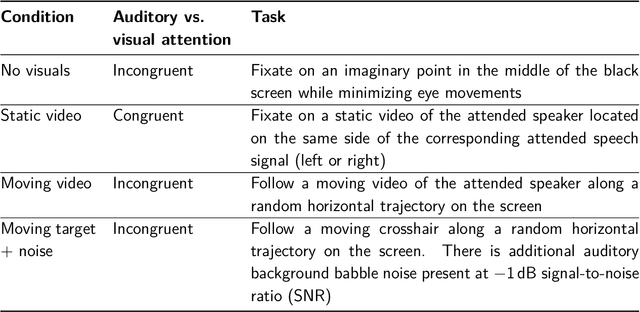
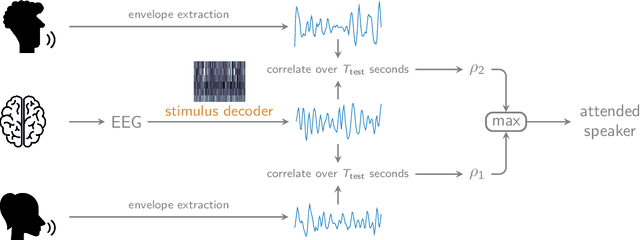
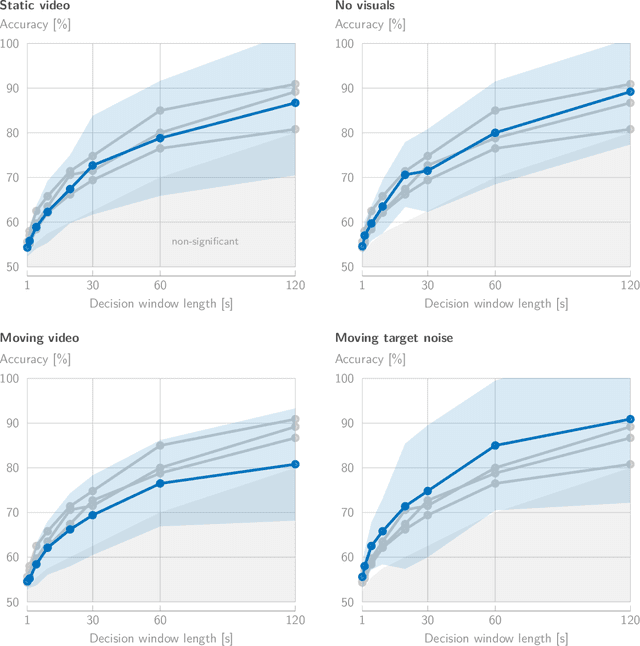
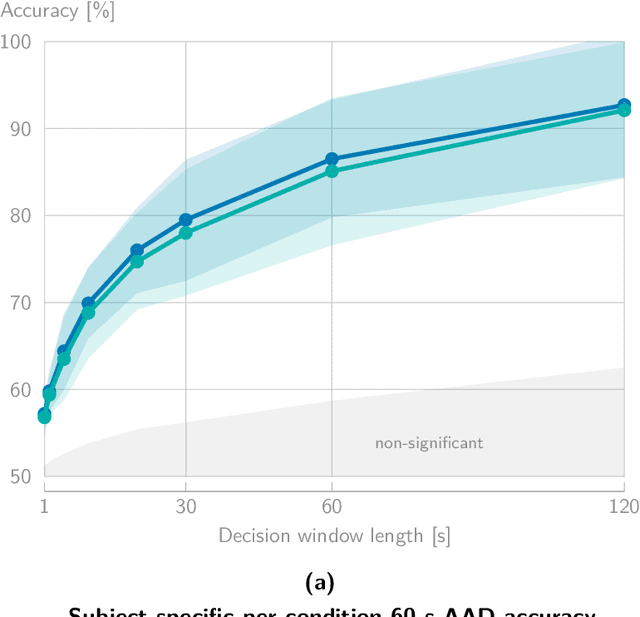
Abstract:In a recent paper, we presented the KU Leuven audiovisual, gaze-controlled auditory attention decoding (AV-GC-AAD) dataset, in which we recorded electroencephalography (EEG) signals of participants attending to one out of two competing speakers under various audiovisual conditions. The main goal of this dataset was to disentangle the direction of gaze from the direction of auditory attention, in order to reveal gaze-related shortcuts in existing spatial AAD algorithms that aim to decode the (direction of) auditory attention directly from the EEG. Various methods based on spatial AAD do not achieve significant above-chance performances on our AV-GC-AAD dataset, indicating that previously reported results were mainly driven by eye gaze confounds in existing datasets. Still, these adverse outcomes are often discarded for reasons that are attributed to the limitations of the AV-GC-AAD dataset, such as the limited amount of data to train a working model, too much data heterogeneity due to different audiovisual conditions, or participants allegedly being unable to focus their auditory attention under the complex instructions. In this paper, we present the results of the linear stimulus reconstruction AAD algorithm and show that high AAD accuracy can be obtained within each individual condition and that the model generalizes across conditions, across new subjects, and even across datasets. Therefore, we eliminate any doubts that the inadequacy of the AV-GC-AAD dataset is the primary reason for the (spatial) AAD algorithms failing to achieve above-chance performance when compared to other datasets. Furthermore, this report provides a simple baseline evaluation procedure (including source code) that can serve as the minimal benchmark for all future AAD algorithms evaluated on this dataset.
AADNet: An End-to-End Deep Learning Model for Auditory Attention Decoding
Oct 16, 2024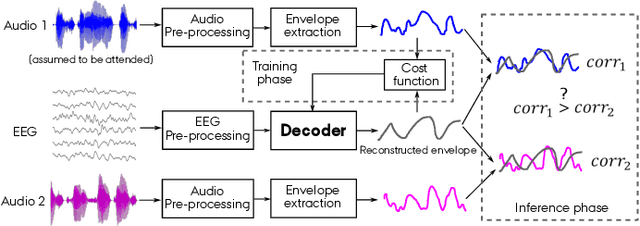
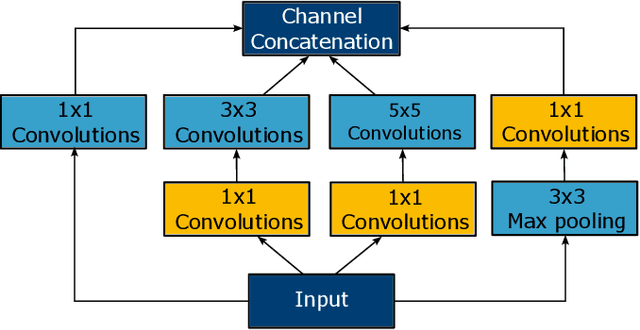
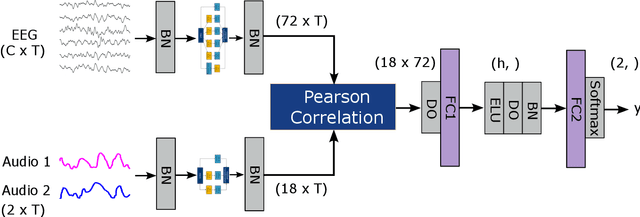
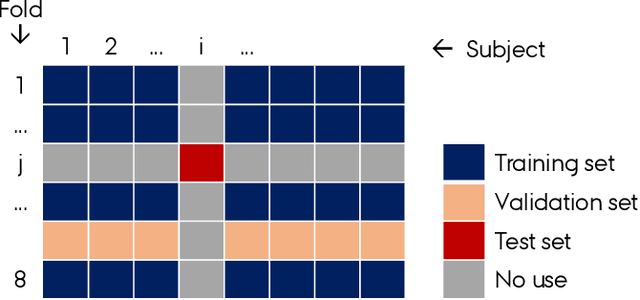
Abstract:Auditory attention decoding (AAD) is the process of identifying the attended speech in a multi-talker environment using brain signals, typically recorded through electroencephalography (EEG). Over the past decade, AAD has undergone continuous development, driven by its promising application in neuro-steered hearing devices. Most AAD algorithms are relying on the increase in neural entrainment to the envelope of attended speech, as compared to unattended speech, typically using a two-step approach. First, the algorithm predicts representations of the attended speech signal envelopes; second, it identifies the attended speech by finding the highest correlation between the predictions and the representations of the actual speech signals. In this study, we proposed a novel end-to-end neural network architecture, named AADNet, which combines these two stages into a direct approach to address the AAD problem. We compare the proposed network against the traditional approaches, including linear stimulus reconstruction, canonical correlation analysis, and an alternative non-linear stimulus reconstruction using two different datasets. AADNet shows a significant performance improvement for both subject-specific and subject-independent models. Notably, the average subject-independent classification accuracies from 56.1 % to 82.7 % with analysis window lengths ranging from 1 to 40 seconds, respectively, show a significantly improved ability to generalize to data from unseen subjects. These results highlight the potential of deep learning models for advancing AAD, with promising implications for future hearing aids, assistive devices, and clinical assessments.
Stimulus-Informed Generalized Canonical Correlation Analysis for Group Analysis of Neural Responses
Jan 31, 2024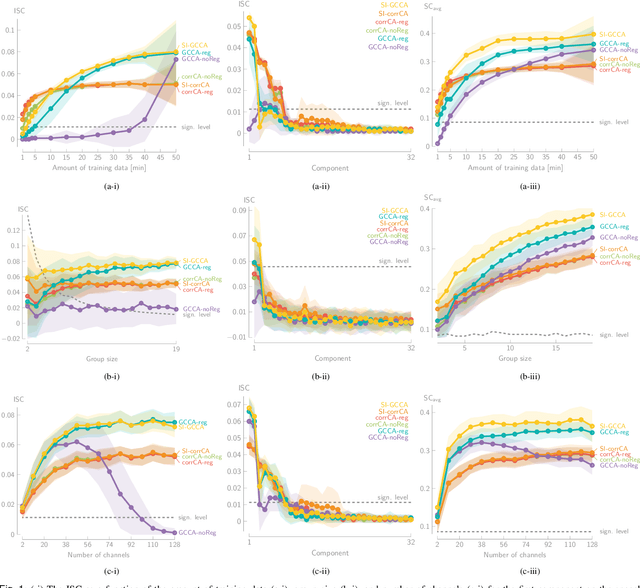
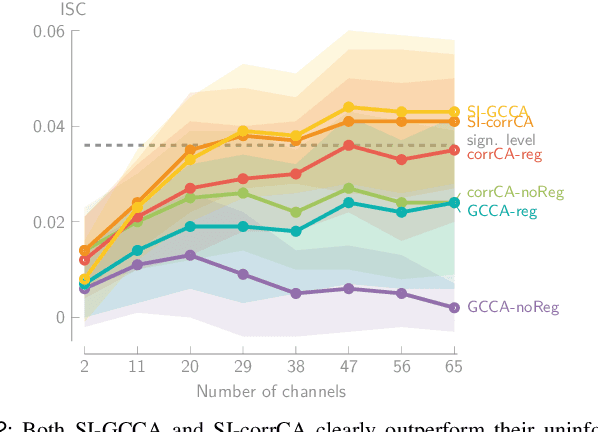
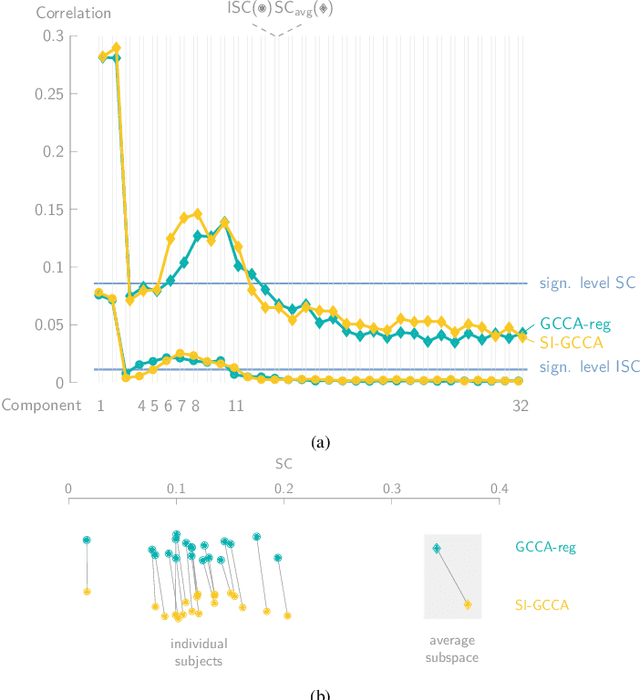
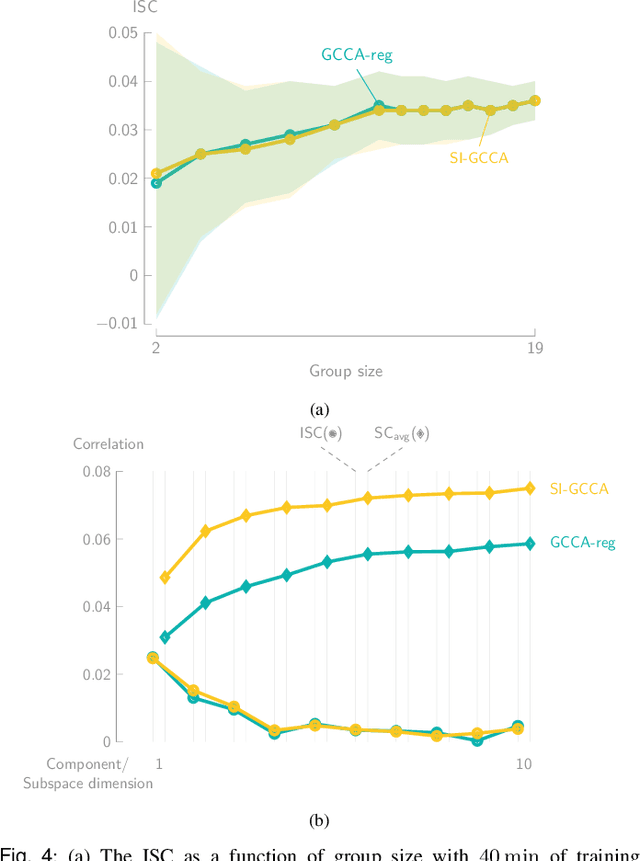
Abstract:Various new brain-computer interface technologies or neuroscience applications require decoding stimulus-following neural responses to natural stimuli such as speech and video from, e.g., electroencephalography (EEG) signals. In this context, generalized canonical correlation analysis (GCCA) is often used as a group analysis technique, which allows the extraction of correlated signal components from the neural activity of multiple subjects attending to the same stimulus. GCCA can be used to improve the signal-to-noise ratio of the stimulus-following neural responses relative to all other irrelevant (non-)neural activity, or to quantify the correlated neural activity across multiple subjects in a group-wise coherence metric. However, the traditional GCCA technique is stimulus-unaware: no information about the stimulus is used to estimate the correlated components from the neural data of several subjects. Therefore, the GCCA technique might fail to extract relevant correlated signal components in practical situations where the amount of information is limited, for example, because of a limited amount of training data or group size. This motivates a new stimulus-informed GCCA (SI-GCCA) framework that allows taking the stimulus into account to extract the correlated components. We show that SI-GCCA outperforms GCCA in various practical settings, for both auditory and visual stimuli. Moreover, we showcase how SI-GCCA can be used to steer the estimation of the components towards the stimulus. As such, SI-GCCA substantially improves upon GCCA for various purposes, ranging from preprocessing to quantifying attention.
Stimulus-Informed Generalized Canonical Correlation Analysis of Stimulus-Following Brain Responses
Oct 24, 2022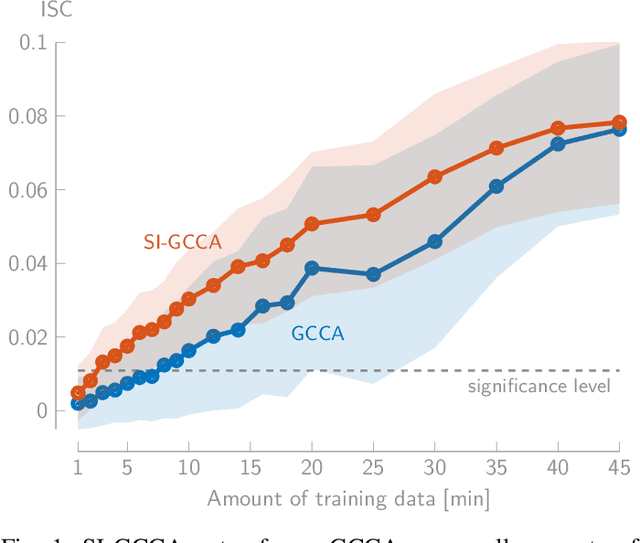
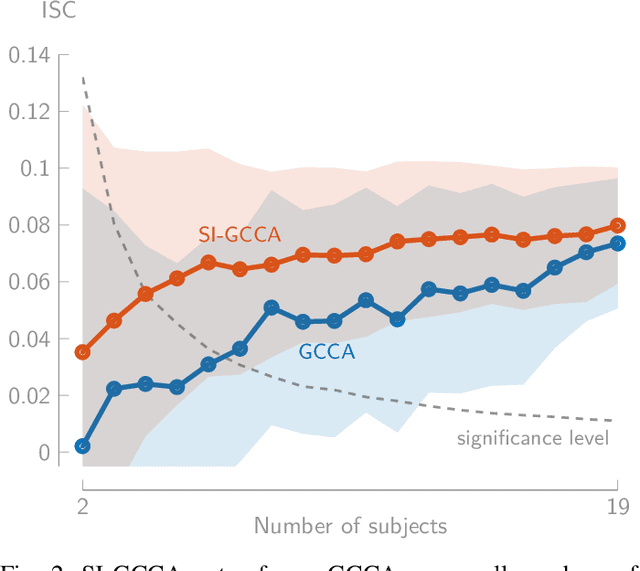
Abstract:In brain-computer interface or neuroscience applications, generalized canonical correlation analysis (GCCA) is often used to extract correlated signal components in the neural activity of different subjects attending to the same stimulus. This allows quantifying the so-called inter-subject correlation or boosting the signal-to-noise ratio of the stimulus-following brain responses with respect to other (non-)neural activity. GCCA is, however, stimulus-unaware: it does not take the stimulus information into account and does therefore not cope well with lower amounts of data or smaller groups of subjects. We propose a novel stimulus-informed GCCA algorithm based on the MAXVAR-GCCA framework. We show the superiority of the proposed stimulus-informed GCCA method based on the inter-subject correlation between electroencephalography responses of a group of subjects listening to the same speech stimulus, especially for lower amounts of data or smaller groups of subjects.
Grouped Variable Selection for Generalized Eigenvalue Problems
May 28, 2021



Abstract:Many problems require the selection of a subset of variables from a full set of optimization variables. The computational complexity of an exhaustive search over all possible subsets of variables is, however, prohibitively expensive, necessitating more efficient but potentially suboptimal search strategies. We focus on sparse variable selection for generalized Rayleigh quotient optimization and generalized eigenvalue problems. Such problems often arise in the signal processing field, e.g., in the design of optimal data-dependent filters. We extend and generalize existing work on convex optimization-based variable selection using semi-definite relaxations toward group-sparse variable selection using the $\ell_{1,\infty}$-norm. This group-sparsity allows, for instance, to perform sensor selection for spatio-temporal (instead of purely spatial) filters, and to select variables based on multiple generalized eigenvectors instead of only the dominant one. Furthermore, we extensively compare our method to state-of-the-art methods for sensor selection for spatio-temporal filter design in a simulated sensor network setting. The results show both the proposed algorithm and backward greedy selection method best approximate the exhaustive solution. However, the backward greedy selection has more specific failure cases, in particular for ill-conditioned covariance matrices. As such, the proposed algorithm is the most robust available method for group-sparse variable selection in generalized eigenvalue problems.
 Add to Chrome
Add to Chrome Add to Firefox
Add to Firefox Add to Edge
Add to Edge